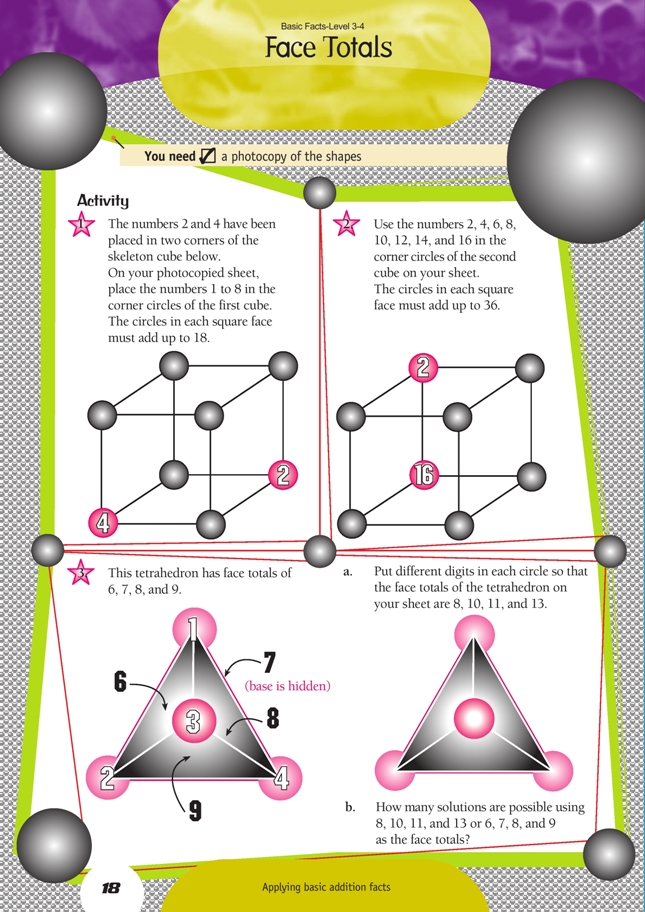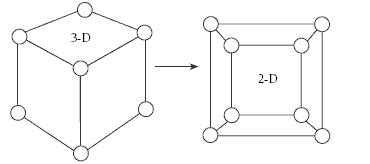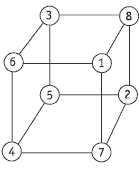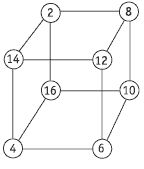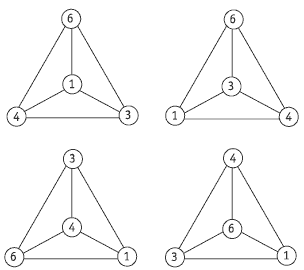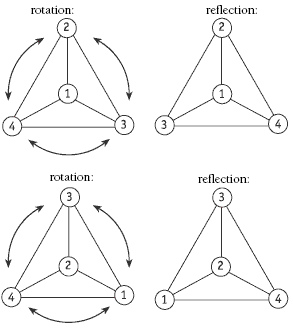This is a level 3 number activity from the Figure It Out series. It relates to Stage 6 of the Number Framework.
A PDF of the student activity is included.
Click on the image to enlarge it. Click again to close. Download PDF (320 KB)
solve puzzles using addition
photocopy of the shapes
The three-dimensional (3-D) nature of these puzzles makes them more challenging. The students will enjoy working collaboratively on them. Some students may find the puzzles easier if they write numbers on small pieces of card and experiment by sticking the numbers onto the corners of a cube. Other students may like to work with a 2-D sketch of the cubes, such as the one below, so that they can easily see the totals of all six faces.
The students can use trial and improvement to solve the puzzles, but their trials shouldn’t be completely random. For example, the bottom face of the cube in question 1 already has numbers that add up to 6, so the numbers that go on the two blank circles must add up to 12. When the students have filled in these circles, they will have two numbers on each of the side faces, so they can complete the side faces next.
You could ask them to find out whether there are other solutions as well as the first one they find. Rotating and reflecting the number combinations will generate additional solutions for the cubes and tetrahedrons. See the Answers for the different number combinations.
In these puzzles, the students will explore the possible numbers that add up to a specific total and meet the conditions of the shapes provided. You will need to decide whether to allow time for the students to find alternative solutions.
With these puzzles, it should be possible for most students to successfully find a solution by using trial and improvement to locate numbers that form the appropriate relationships.
Answers to Activity
1. A possible solution is:
2. A possible solution is:
3. a. Four of the possible solutions are:
(The only digits that work are 1, 3, 4, and 6. Their positions can be varied.)
b. Solutions for the triangle puzzle with face totals of 8, 10, 11, and 13 will all have the same combinations in common, regardless of the position of digits. These are:
1–3–4 (8), 1–3–6 (10), 1–4–6 (11), 3–4–6 (13).
The combinations for the 6, 7, 8, and 9 face totals will be 1–2–3 (6), 1–2–4 (7),
1–3–4 (8), and 2–3–4 (9).
For each triangle puzzle, there are 24 solutions. Each of the four digits can be
used as the centre digit with the other three digits swapping places, using rotation and
reflection. For example:
